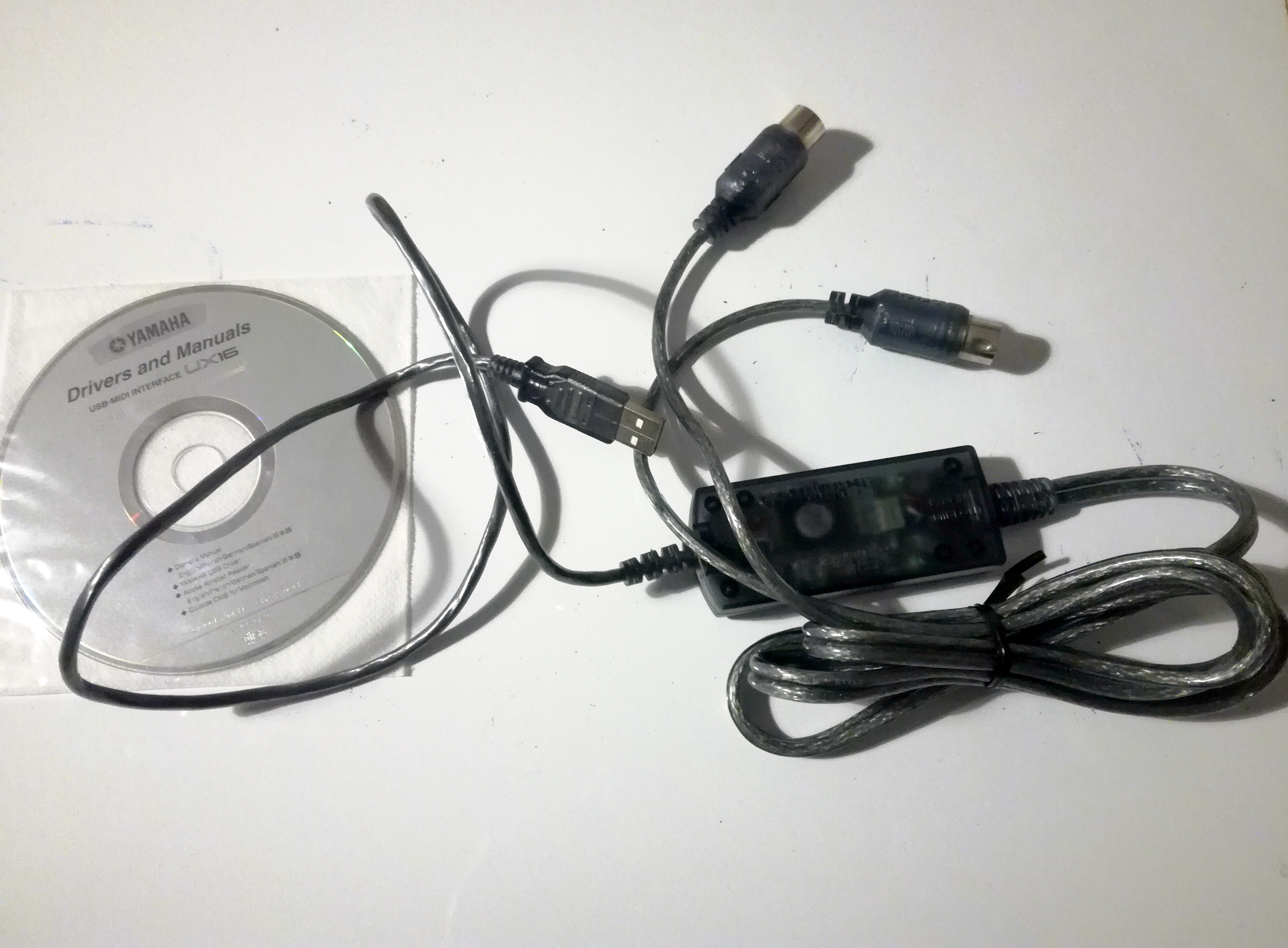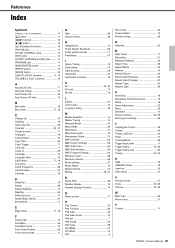Yamaha Dtx Midi Driver Mac
- Yamaha Dtx Midi Driver Machine
- Yamaha Dtx Midi Driver Mac Os
- Yamaha Dtx Midi Driver Mac Update
- Yamaha Dtx Midi Driver Mac
- Yamaha Dtx Midi Driver Mac Version
- Yamaha Dtx Midi Driver Mac Downloads
The DTX400 series includes the best sounds from our flagship DTX models and features a new. USB-MIDI Driver V1.3.2-2 for Mac macOS 10.15-OS X 10.5. Yamaha USB-MIDI Driver Installation Guide 4 7 When the “Welcome to the InstallShield Wizard for Yamaha USB-MIDI Driver” window appears, click Next. If the warning message below appears during the installation, click Install.
Musical Instrument Digital Interface, or MIDI, keyboards are a fantastic and diverse tool when it comes to creating sophisticated audio electronically. With most modern models allowing for streamlined, plug-and-play setups, more and more people are branching out and grabbing MIDIs.

What should I do if I am experiencing MIDI keyboard delay or latency? In order to effectively identify and solve the issue, you should address your keyboard sound card and audio settings to get to the root of the problem.

Although MIDI keyboards can be very convenient, we’ve all run into the familiar and aggravating delay issue sooner or later, and it’s time to shed some light on the problem. Very rarely does a latency issue lie within the MIDI keyboard itself. In this article, I will explain some of the most common causes of the delays and then list some potential solutions.
But firstly:
What is a MIDI signal and how does MIDI work?
I thought it would be useful to quickly answer these questions so you can understand what is happening when you use a MIDI keyboard or controller.
Yamaha Dtx Midi Driver Machine
I wrote an entire article which explains how MIDI works in detail (you can read it here).
MIDI stands for ‘Musical Instrument Digital Interface’.
A MIDI signal is different from an audio signal as no audio information is sent by the device. Instead, it is a digital signal and sends a message to the receiving device, usually a computer or laptop. This signal is a series of 1s and 0s which tell the computer a number of things such as:
- which note is pressed
- the moment a note is pressed and released
- the velocity (how hard it is pressed)
- after-touch (when key pressure changes)
- vibrato, and
- pitch bend,

1) Your Audio Buffer Size is Too Large
As I mentioned above MIDI is a digital signal that needs to be processed by your computer or laptop before making a sound.
The buffer size is the time it takes for your computer sound card to process the incoming information.
When it comes to audio buffer, the larger your buffer size, the more latency you’re going to experience. While dropping the buffer size too sharply can cause glitches or drops, there is a happy medium in between the extremes.
Solution:
When this happens, navigate to your audio driver settings within your digital audio workstation (DAW). Adjust any sliders or numbers to get your Buffer set at around 10ms or lower.
2) You’re not using ASIO Audio Drivers (Core Audio on Macs)
Successfully maintaining low buffer sizes can be nearly impossible using MME or Direct X in Windows, and dedicated sound cards that can operate ASIO audio drivers significantly reduce delays in MIDIs.
Windows didn’t design its drivers specifically for audio production and so they don’t do the job as well as they perhaps could. The drivers are designed to do lots of different tasks.

Solution:
On Windows PCs and laptops (particularly older models) that only have MME or DirectX drivers, you can download ASIO4ALL. In short this is a low latency driver designed specifically for the function of reducing latency in audio production.
I wrote an entire article explaining what ASIO4ALL is which you can read here if you want more information.
Bear in mind that ASIO4ALL is not available for Mac but the Core Audio drivers that come pre-installed on most Mac computers and laptops for a long time now should be more than adequate to deal with music production.
If you still have issues even with ASIO drivers most DAWs will have a ‘driver error compensation setting’ you can get your DAW to compensate for driver errors and therefore get rid of latency by sort of tricking it.
This will take a bit of playing around with and will only really work if your latency is a consistent amount. If your latency amount varies this may not work.
3) Your Audio Input Device Isn’t Disabled
Latency can be increased when your Audio Input Device is enabled. Having the computer or laptop try and process audio and MIDI signals at the same time may be causing latency.
Solution:
If you aren’t recording from an external source, and simply want to record MIDI, go ahead and disable the Audio Input Device for a quick solution to this common problem.
4) Your Sample Rates are Too Low
The number of samples processed per second by your computer or laptop is referred to simply as the sample rate. If the sample rate is too low, then latency goes up accordingly.
Solution:
You can increase your sample rate within your DAW to combat latency. But be aware that this will increase stress on your CPU, which can be a problem all in of itself if you don’t have the type of computer that can handle that. Similar to with buffer size the further you push it to drive down the latency the more pressure you put on the computer or laptop.
5) Your CPU is Overworked
Speaking of CPUs, while it’s all well and good to increase sample rates at the expense of your CPU, some processors simply cannot handle too much stress. This isn’t necessarily caused by increasing sample rates, but a variety of things that can arise and interrupt a CPU, particularly in laptops.
System updates and background applications are examples of processes that can burden your CPU with more than it can handle, leading to latency complications among others.
Solution:
Try and keep the computer or laptop you use for audio production dedicated to that purpose. The more applications you try and run at one time the more strain is placed on the CPU and this means latency is more likely to occur.
When purchasing a laptop or PC make sure you follow the minimum specs in this guidance to ensure the machine is capable of handling the high levels of data that audio production requires.
6) Your Laptop/ Computer Isn’t Compatible
Carrying on from the last point on CPU, if your other laptop or computer specifications aren’t high enough MIDI keyboard delay may also occur.
Solution:
Make sure you are using multi-core processors, and no less than 4GB of RAM, USB 3.0 connectivity and a large enough hard drive to give you the best chance of minimizing delay.
For a full guide on laptop specs check out this article, and for my latest recommendations click here.
7) You Have Faulty Plug-Ins
Yamaha Dtx Midi Driver Mac Os

If you’re utilizing all the proper hardware and drivers but are still experiencing latency issues, there’s the potential that one of your plug-ins is reporting inaccurately. It may take a bit of time, but go through and delete plug-ins one by one, testing as you go so you can discover whether one of them is the faulty missing puzzle piece.
8) You’re Rushing or Overlooking Things
There is a fair amount of troubleshooting to be had when it comes to solving your MIDI keyboard’s delay problems, and it’s understandable just how frustrating it is to wade through all of the potential causes, retest, and continue adjusting.
Regardless, you have to go through the steps as methodically and patiently as possible, because if you don’t take the time to accurately look through the details, it’ll be easy to overlook a specification that could make all the difference.
Bonus Solution
Yamaha Dtx Midi Driver Mac Update
If you really can’t get to the bottom of your MIDI latency issues then you may have to resort to editing or mapping your MIDI track manually in your DAW.
You can input the track using your keyboard with the delay as close as you can and then go through on the piano roll and manually move the notes so they are quantized (i.e on the grid, in time with other instruments). You can actually get the DAW to automatically do this by using the quantization tool. The problem with this is it will perfectly match all the notes to be on the beat. You may think that would be desirable but it can leave the music sounding a bit too robotic. I would therefore recommend moving some of the notes slightly off the grid manually to bring back give a more natural sound.
Yamaha Dtx Midi Driver Mac
Or if you really can’t stand using the MIDI instrument with the delay then manually enter the notes by hand by drawing them onto the piano roll. This will take a while but it will save you the money of getting a new computer!
How do I get rid of delay on other instruments?
Delay/ latency is not an issue simply limited to MIDI keyboards and controllers. If you try to record a guitar or synthersizer directly into your computer you may also experience problems.
To get around this ensure that you are using a dedicated audio interface.
As I mentioned before your computer or laptop is unlikely to have sound cards and drivers that were designed for recording music and so they will struggle and cause latency a lot of the time. An audio interface contains a sound card and also drivers which are designed for audio production.
Yamaha Dtx Midi Driver Mac Version
I currently use a Focusrite Scarlett 2i4 which got rid of all latency issues I used to get so I would recommend it to anyone.
Yamaha Dtx Midi Driver Mac Downloads
Do MIDI keyboards need to a laptop or computer to work?
No. There are plenty of mobile applications for both Apple and Android users that can be downloaded for free or at a very low price. These mobile tools make it easier than ever for MIDI keyboard users to make music on the go. I wrote a detailed article on this subject, if you want to learn more click here.